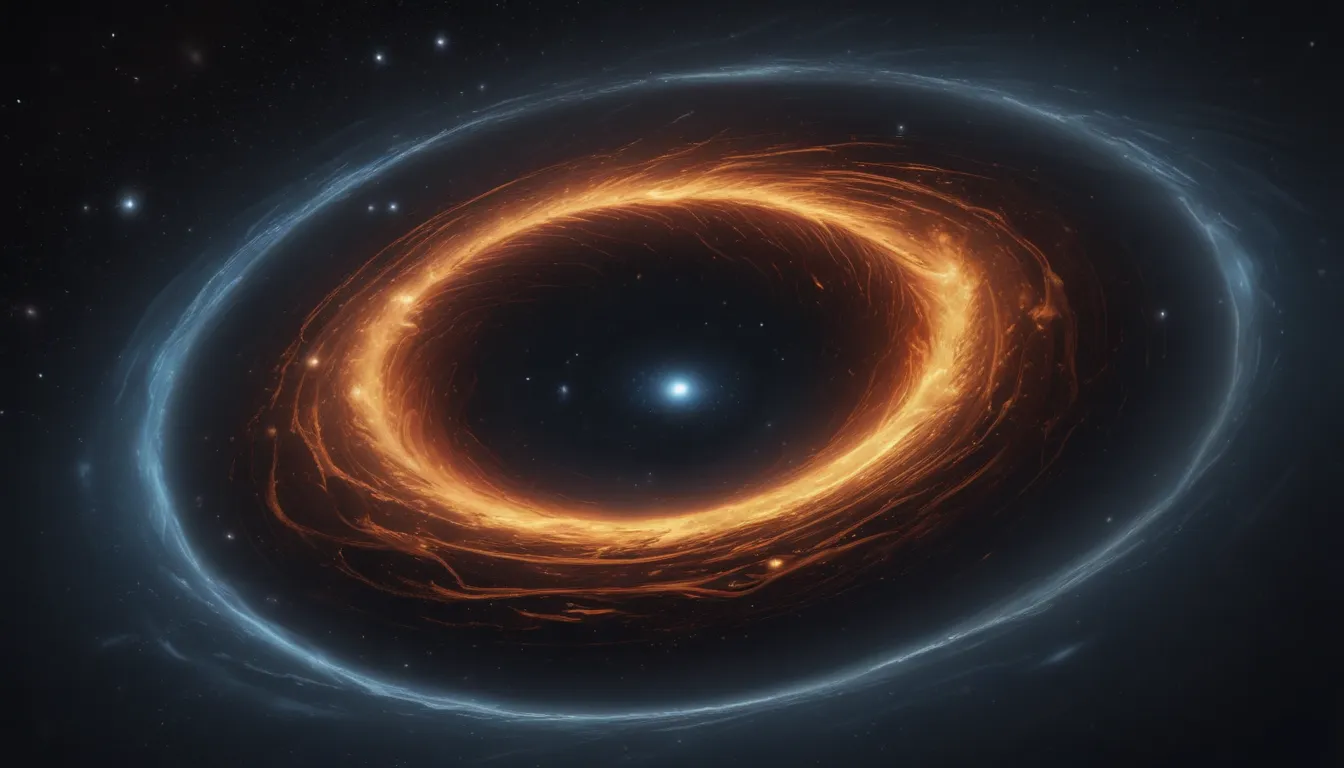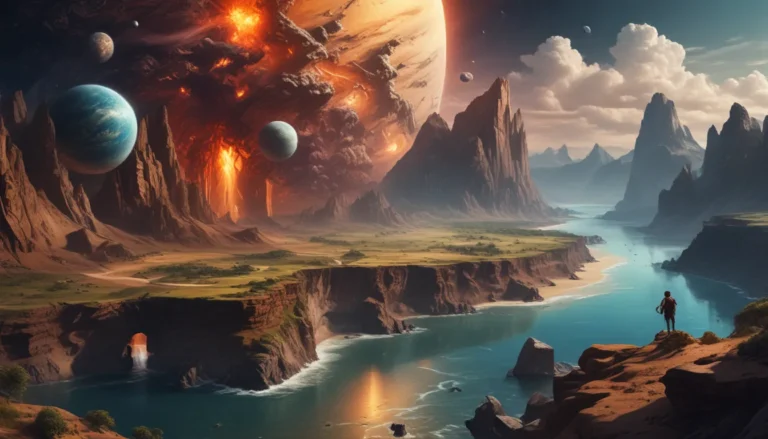The pictures we use in our articles might not show exactly what the words say. We choose these pictures to make you interested in reading more. The pictures work together with the words but don’t take their place. The words still tell you the important facts.
Black holes, those enigmatic cosmic entities, have long captivated the imaginations of scientists and the general public alike. Their immense gravitational pull, capable of trapping even light, has sparked curiosity and wonder. In this article, we'll delve into 14 surprising facts about black holes, shedding light on their formation, properties, and profound implications for our understanding of the universe.
Unveiling the Secrets of Black Holes
Black holes are mysterious cosmic objects formed from collapsed stars, distorting space and time, emitting powerful radiation, and even slowing down time near them. Despite their destructive reputation, black holes play a crucial role in the creation of new stars and galaxies. Studying them can provide valuable insights into the fundamental laws of physics and the mysteries of the universe, contributing to our understanding of gravity, spacetime, and the evolution of galaxies. Let's unravel the mysteries of these cosmic phenomena together.
The Formation of Black Holes
When a massive star runs out of fuel and collapses under its own gravitational pull, it forms a black hole. The immense gravitational force is so strong that nothing, not even light, can escape its grasp.
The Diverse Sizes of Black Holes
Black holes exhibit a wide range of sizes, with some as small as a single atom and others millions of times more massive than our Sun. The size of a black hole is determined by the mass of the star that collapsed to form it.
Distortion of Space and Time
According to Einstein’s theory of relativity, massive objects like black holes can bend and distort the fabric of space and time. This phenomenon, known as gravitational lensing, can cause light from distant objects to appear distorted or magnified when passing near a black hole.
The Event Horizon
Every black hole has an event horizon, which marks the point of no return. Anything that crosses this threshold is pulled into the black hole and can never escape.
Growth and Evolution of Black Holes
Black holes can grow in size by absorbing matter and merging with other black holes. As they consume nearby objects and celestial bodies, their gravitational pull becomes stronger, and their mass increases.
Emission of Powerful Radiation
Black holes emit high-energy radiation in the form of X-rays and gamma rays. This radiation is generated by the intense gravitational forces and the superheated matter swirling around the black hole.
Hawking Radiation and Evaporation
Physicist Stephen Hawking proposed the theory of Hawking radiation, suggesting that black holes can slowly lose mass and eventually evaporate. This process occurs due to the creation of virtual particle-antiparticle pairs near the event horizon.
Challenging Misconceptions: Black Holes as Not “Holes”
Contrary to their name, black holes are not empty voids in space. Instead, they are incredibly dense regions with a strong gravitational pull, where matter is compressed to a point of infinite density known as a singularity.
Temporal Distortions near Black Holes
Time dilation occurs near black holes due to the intense gravitational field. Clocks closer to the black hole appear to move slower compared to clocks farther away, showcasing the peculiar effects of gravity on time.
Astounding Phenomena: Jets of Matter
Black holes with accretion disks can emit powerful jets of particles and energy from their poles, spanning thousands of light-years across space. This dynamic process adds another layer of complexity to the behavior of black holes.
Exploration of Different Types of Black Holes
There are several types of black holes, including stellar black holes formed from massive stars' collapse and supermassive black holes found at the centers of galaxies, containing millions or billions of times the mass of our Sun.
Unprecedented Gravitational Forces
The gravitational force near a black hole is so intense that it can cause spaghettification, stretching and elongating objects into long, thin shapes. This phenomenon underscores the extreme nature of black holes.
Key to Unlocking Universe’s Mysteries
Studying black holes can provide valuable insights into the fundamental laws of physics and the mysteries of the universe. They not only challenge our understanding of gravity and spacetime but also offer critical clues to the evolution of galaxies.
Black Holes: Catalysts of Creation
Beyond their reputation for destruction, black holes also contribute to the creation of new stars and galaxies. Material pulled into a black hole can be ejected back into space, triggering the formation of celestial objects, showcasing the dual nature of these cosmic entities.
These 14 surprising facts about black holes unveil the enigmatic and extraordinary nature of these cosmic phenomena. From their formation to their impact on spacetime, black holes continue to inspire awe and intrigue, pushing the boundaries of our knowledge of the universe.
Embracing the Enigma of Black Holes
Black holes have fascinated scientists and astronomers for decades, revealing new surprises and challenges as we delve deeper into their mysteries. Their mind-boggling properties, from immense gravitational pull to spacetime distortion, continue to astonish and expand our understanding.
Through ongoing research and technological advancements, we are poised to uncover even more astonishing revelations about black holes. These cosmic enigmas will remain a source of wonder and inspiration, reminding us of the vastness and complexity of the universe we call home.
Exploring Black Holes: FAQs
-
What is a black hole?
A black hole is a region in space where gravity is so strong that nothing, not even light, can escape its grasp. -
How are black holes formed?
Black holes are formed from the remnants of massive stars that have undergone a supernova explosion. -
Can a black hole destroy the entire universe?
No, black holes cannot destroy the entire universe, as their influence is limited to their immediate vicinity. -
Are there different types of black holes?
Yes, there are various types of black holes, including stellar black holes and supermassive black holes. -
Can anything escape from a black hole?
According to current understanding, once something crosses the event horizon of a black hole, it cannot escape. -
Do black holes emit radiation?
Yes, black holes can emit Hawking radiation due to quantum effects near the event horizon. -
Can black holes be detected and observed?
Yes, black holes can be detected indirectly through their effects on nearby objects and by studying the radiation they emit. -
Are black holes a threat to Earth?
No, black holes located far from our solar system pose no threat to Earth. -
Can anything survive inside a black hole?
As per our current understanding, anything entering a black hole is crushed to a singularity. -
What happens inside a black hole?
Various theories exist, but the extreme conditions inside a black hole pose challenges to definitive conclusions.
As we navigate the complexities of black holes, we continue to uncover remarkable truths that reshape our understanding of the cosmos. Let's embark on a journey of exploration and discovery, fueled by curiosity and a thirst for knowledge.
By immersing ourselves in the enigmatic world of black holes, we gain insights into the awe-inspiring forces shaping the universe. As we unravel the mysteries of these cosmic behemoths, we witness the intricate interplay of space, time, and matter, leading us to profound reflections on the nature of our existence. Let's embrace the wonder of black holes and marvel at the boundless mysteries they hold.






